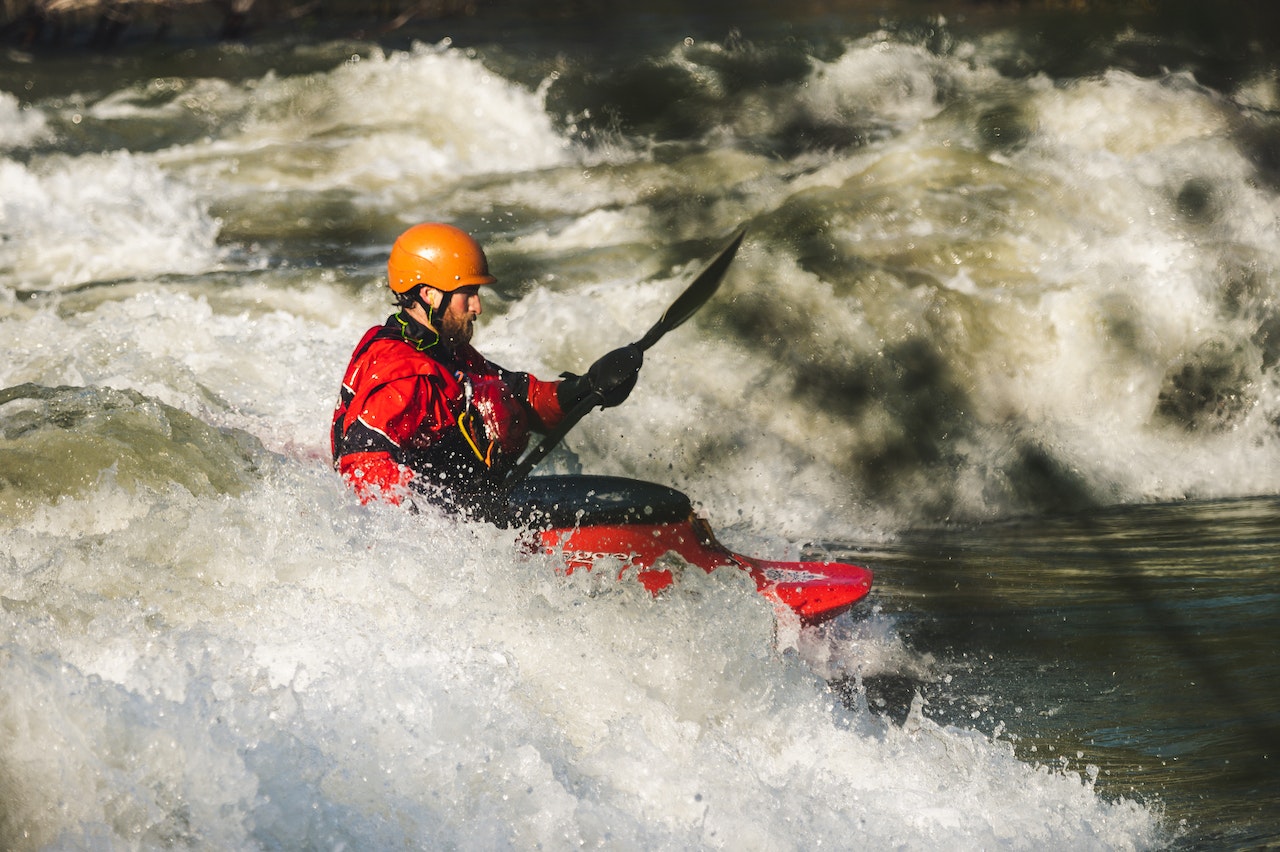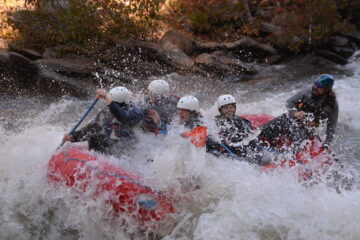Think you know whitewater river rafting? Keep reading, the history of whitewater rafting in the West and its popularization into the sport it is today will likely surprise you. At its most basic level, whitewater rafting gets its name from the combination of two relatively obvious points: ‘whitewater’ because of the appearance of the white frothing water as it rushes forward, and rafting because of the inflatable raft. But this is the just start of the nearly 200-year story of the sport. For you history buffs or information lovers craving more content, check out our blog post about the history of the Ocoee River and the area.
The Origins – 1840s
Although rafts had previously been around for centuries and used by indigenous peoples, constructed using natural materials like logs and reeds, contemporary inflatable rafts as we know them today first appeared in the 1840s. This first version was constructed by Lieutenant John Fremont and Horace H. Day, who built the raft with the intention of surveying the Rocky Mountains and Great Plains via the Snake River in the Pacific Northwest. However, their attempt ultimately failed as the rough waters proved to be too aggressive for this early constructed raft and ultimately destroyed it. But this first contemporary voyage would prompt further scientific expeditions.
Ongoing Attempts – 1940s
It was not until a hundred years later when a significant development took place with the reintroduction of the rubber raft following its popularization in a military context as well as its development for use as a lifeboat. With the availability of military surplus rafts, it’s around this time that recreational rafting starts to gain its initial footholds. Next, (as there often is with history) the claim to the first commercial whitewater rafting trip appears to be disputed between Clyde Smith’s June 1940 trip through Snake River Canyon, and a separate claim of a trip which also supposedly also took place in June 1940 on the Salmon River. Which, additionally, is believed to be the location of the first-ever rafting company.
Further Progress – 1950s
After these continued attempts, a larger shift takes place towards monetizing the sport of rafting and promoting it on a larger-scale as an attraction. In the 1950’s renowned business tycoon John D. Rockefeller opened a rafting resort hotel in Grand Teton National Park and began offering float trips. The resort used rafts that measured 8 ft wide by 27 ft long and there were less than 500 people who went that year. Ultimately from a monetary investment standpoint, this particular attraction was deemed a flop, but it also reflected a larger steadily growing interest in rafting, prompting the continued development of rafting as a commercial attraction.
Rise To Popularity – 1960s And 1970s
The 1960s and the following decade saw the emergence of various commercial rafting companies who continued to develop the sport while building its popularity. These private rafting companies have long been seen as the major force for the development of rafting as a sport through their own personal passion and the desire to share this with the larger population. Accordingly, with increased demand, commercial rafting helped shift the sport into a more mainstream activity. It’s also at this time that several rafting companies began offering tours in iconic locations such as the Grand Canyon and many others.
Next, whitewater sports, in particular canoe slalom, then experienced a pivotal moment when it debuted at the 1972 Munich Olympics. Following this wide-scale international attention, there was a rapid growth in the industry. Canoe slalom then made an appearance at the 1992 Barcelona Olympics (which also saw the addition of kayak slalom), followed by the 1996 Atlanta games, and has since become a regularly occurring event.
Solidified As A Sport – 1990s To Present Day
In the 1990s further innovation took place with the invention of self-bailing rafts in which precisely located holes in the raft release excess water. This is one of the fundamental developments in the sport as it meant no additional weight or sagging in the raft, as well as no longer having to manually bail water, especially relevant on more challenging or longer runs. Added safety measures like helmets and lifejackets, as well as lightweight paddles have solidified the sport as a great activity for adventure seekers and families alike.
In terms of governing bodies for the sport, the International Rafting Federation was founded in 1997 which then launched the World Rafting Championship History. Most recently, the World Rafting Federation was founded in 2018 in order to help regulate and grow the sport as both a leisure sport and promote development at the elite level with hopes of rafting sports becoming an event at the Olympic level. The competitive level is now made up of four disciplines which include: Sprint, Head-to-Head (H2H), Slalom, and Downriver.
Now that you know the whole story about rafting as a sport, how about getting out there yourself and discover why rafting has risen in popularity to its current status with your own outdoor adventure on either our half-day or full-day rafting trips.




